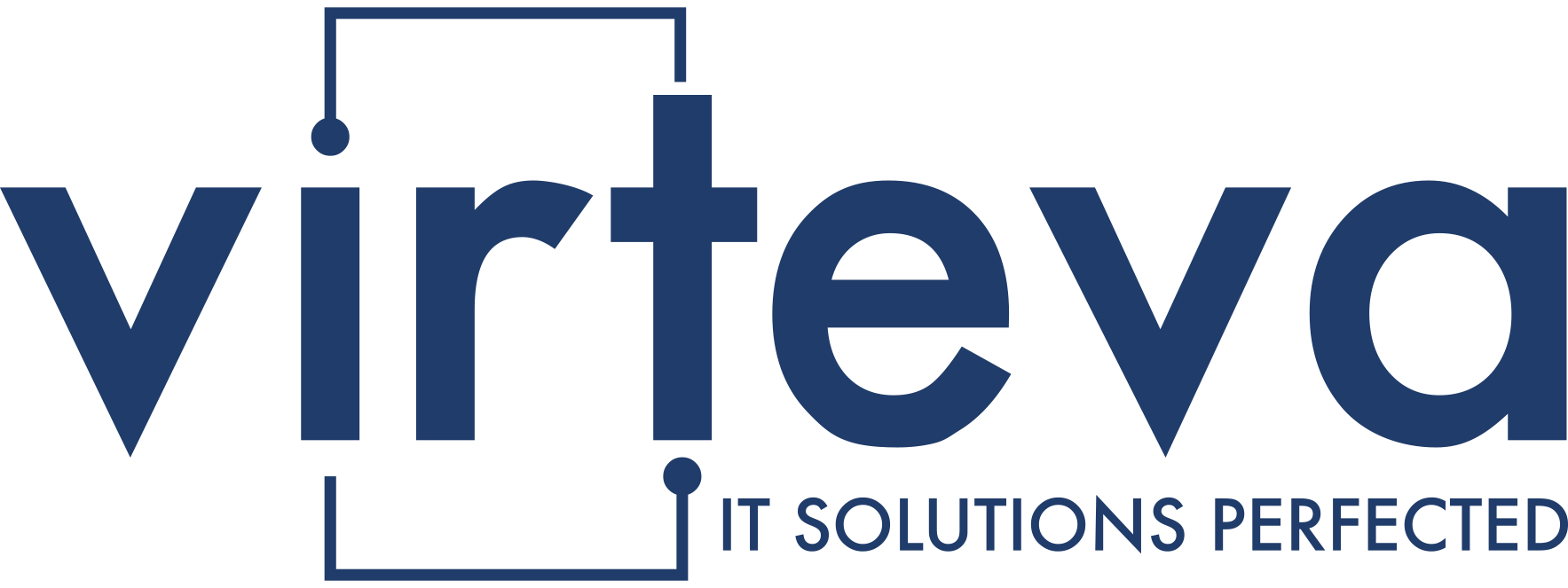Let’s dive in and discover how outsourcing your IT-managed solutions can dramatically boost your whole operation. Making it more efficient, slashing costs, and fortifying your network against cyber hooligans. We’ll guide you through the steps of selecting the ideal managed IT solution – one that aligns with your business goals. All in all, we’ll – and we’re not fond of this word, but when it fits, it fits – empower you with the right data to make informed decisions and optimize your IT infrastructure for success.
What are Managed IT Solutions?
Managed IT solutions involve outsourcing the management and maintenance of a company’s IT infrastructure to an external service provider. It’s giving a third-party supplier all that extra legwork and letting them run with it. This comprehensive approach encompasses a wide range of services, from network monitoring and security to hardware and software support.

Like What?
- Network Management: Monitoring, maintenance, and optimization of network infrastructure.
- Data Backup and Recovery: Implementing robust backup strategies and disaster recovery plans.
- Security Management: Protecting systems and data from cyber threats through firewalls, antivirus software, and security audits.
- Help Desk Support: Providing technical assistance to end users.
- Cloud Services Management: Managing cloud-based applications and infrastructure.
- IT Consulting: Offering strategic IT advice and guidance.
Types of IT Managed Solutions
- Network Management: Involves overseeing the performance and security of a company’s network infrastructure.
- Cybersecurity: Protects sensitive data and systems from cyber threats.
- Cloud Services: Leverage cloud technology, enhancing efficiency and scalability.
- Help Desk and IT Support: Provide timely and effective technical assistance to employees, which is crucial for productivity.
- Data Backup and Recovery: Protects critical data from loss or corruption, which is essential for business continuity.
- Cloud-Based Managed IT Solution: Let’s talk about the specifics and the benefits of a cloud-based managed IT solution.
Specifics
- Infrastructure as a Service – IaaS: Manages the underlying IT infrastructure, including servers, storage, and networking.
- Platform as a Service – PaaS: Manages the platform and development tools, allowing businesses to focus on application development.
- Software as a Service – SaaS: Delivers software applications over the internet, eliminating the need for local installation and maintenance.
- Desktop as a Service – DaaS: Delivers virtual desktops to users, enabling access to applications and data from any device.
Benefits
- Cost Reduction: Eliminates the need for on-premises hardware and software so businesses can significantly reduce IT expenses.
- Scalability: Easily adapts to changing business needs, allowing a rapid scaling up or down of resources.
- Disaster Recovery: Backups and data replication provide enhanced protection against data loss.
- Increased Accessibility: Employees can access data and applications from anywhere with an internet connection, improving productivity and flexibility.
- Enhanced Security: Cloud providers invest heavily in security measures, often surpassing the capabilities of in-house IT teams.
Managed IT Solutions – Streamlining Business Operations
Managed IT solutions significantly streamline business operations by:
- Freeing Up Internal Resources: By outsourcing IT management, businesses can redirect employees’ time and energy towards core competencies and strategic initiatives.
- Improving Efficiency: Proactive monitoring and maintenance prevent system failures and downtime.
- Improving Security: Offers robust security measures, protecting sensitive data and preventing costly breaches.
- Optimizing Costs: By consolidating IT expenses into a predictable monthly fee, businesses can better manage their IT budgets.
- Leveraging Expertise: Offers specialized knowledge and skills, ensuring optimal IT performance and alignment with business goals.
Cutting Out the Fat – Slashing Costs with IT-Managed Solutions
One of the primary benefits is the predictable monthly expenses that come with a subscription-based model. This approach allows for more effective budgeting, as it eliminates the unpredictability of costs associated with maintaining an in-house IT team.
Another advantage is the expertise and experience that managed IT services bring to the table. By outsourcing your IT needs to skilled professionals, you gain access to a wider range of skills and knowledge without the significant expense of hiring and training full-time employees.
IT-managed solutions also help reduce downtime by providing proactive monitoring and maintenance of your systems. This preventive approach can minimize disruptions and the associated costs of system outages.
Scalability is another key benefit. IT-managed services can easily scale up or down according to your business needs, helping you avoid the costs of overstaffing or underutilizing resources that often come with an in-house IT team.
Lastly, managed IT providers stay current with the latest technologies, allowing your business to leverage cutting-edge tools for improved efficiency and cost savings. This access ensures that you remain competitive without the need for constant investment in new technology.
Cybersecurity with Managed IT Solutions
Managed IT solutions significantly bolster cybersecurity by providing expert monitoring, threat detection, and prevention. With dedicated teams and advanced technologies, managed service providers proactively identify vulnerabilities, implement robust security measures, and develop comprehensive incident response plans. This proactive approach protects sensitive data, minimizes downtime, and safeguards businesses from costly cyberattacks, allowing them to focus on core operations with peace of mind.
Scaling Up – No Sweat
Managed IT solutions offer the flexibility to expand or contract IT resources as needed, aligning technology with evolving business demands. By leveraging cloud-based infrastructure and automation, businesses can quickly adapt to market shifts, accommodate increased workloads, and optimize operations. This agility empowers organizations to seize opportunities, reduce costs, and maintain a competitive advantage throughout their growth trajectory.
Business Continuity — Reliable Backup and Recovery Services
By safeguarding critical data and systems from unforeseen disruptions like natural disasters, cyberattacks, or hardware failures, managed IT solutions provide a safety net. Regular backups, secure off-site storage, and comprehensive disaster recovery plans minimize downtime, protect valuable assets, and ensure business operations can resume swiftly, mitigating financial losses and maintaining customer trust.
Efficient Network Management
A well-managed network ensures seamless communication, optimized performance, and minimal downtime, directly impacting productivity and customer satisfaction. By proactively monitoring, maintaining, and securing network infrastructure, businesses can enhance collaboration, accelerate data transfer, and protect sensitive information, ultimately driving growth and competitive advantage.
24/7 Support in Maintaining Business Efficiency
Unforeseen IT issues can arise at any time, potentially disrupting operations and impacting productivity. With round-the-clock support, businesses can minimize downtime, swiftly address problems, and ensure uninterrupted workflows. This proactive approach safeguards critical systems, protects data, and fosters a reliable IT environment, enabling employees to focus on their core tasks without IT-related interruptions.

IT Requirements Based on Business Size and Industry
Factors such as company size, industry, and growth stage significantly influence IT needs. Smaller businesses may prioritize cost-effective solutions, robust security, and cloud-based services, while larger enterprises demand scalable infrastructure, advanced analytics, and comprehensive data management. Industry-specific regulations and compliance standards also shape IT requirements, necessitating tailored solutions to protect sensitive information and ensure operational continuity.
Steps for a Smooth Transition from In-House IT to Managed Services
Key steps include:
- Comprehensive IT Assessment: Conduct a thorough evaluation of your current IT infrastructure, identifying assets, software, and systems.
- Select the Right Managed Service Provider – MSP: Choose an MSP that aligns with your business goals and offers the necessary services.
- Define the Scope of Services: Clearly outline the services to be transferred to the MSP, ensuring no gaps in coverage.
- Data Migration: Develop a secure and efficient plan for transferring data to the MSP’s environment.
- Staff Transition: Determine the roles of in-house IT staff during and after the transition, providing clear communication and support.
- Establish Key Performance Indicators – KPIs: Define metrics to measure the MSP’s performance and ensure service level agreements are met.
- Ongoing Evaluation: Continuously monitor the transition and make adjustments as needed to optimize the partnership.
Expansion and Evolution of Managed IT Cloud Solutions
Managed IT cloud solutions are rapidly evolving to meet the growing demands of modern businesses. One of the key areas of expansion is the integration of hybrid and multi-cloud environments. Providers are now offering seamless management and optimization across different cloud platforms, allowing businesses to leverage the benefits of multiple cloud services.
Another significant development is the incorporation of artificial intelligence (AI) and automation into managed IT cloud solutions. These technologies streamline operations, enhance efficiency, and improve predictive maintenance, making IT processes more efficient and less prone to errors.
Cybersecurity has also become a primary focus for managed IT cloud providers. As cyber threats become increasingly sophisticated, providers are offering advanced cybersecurity solutions that include threat detection, incident response, and compliance management to protect businesses from potential risks.
Data management and analytics are other areas where managed IT cloud solutions are expanding. Providers now offer comprehensive data management services that help businesses extract valuable insights from their data, driving better decision-making and growth.
Finally, there is a growing emphasis on industry-specific solutions. Managed IT cloud providers are tailoring their services to meet the unique needs of industries such as healthcare, finance, and retail, ensuring that each sector receives the specialized support it requires to thrive in a competitive market.
Managed IT Solutions — Let a Pro Take the Baton
Managed IT solutions offer a multitude of benefits for businesses. By outsourcing IT management, organizations can significantly enhance operational efficiency, reduce costs, and bolster cybersecurity. From proactive network management and data protection to scalable cloud solutions and expert support, managed IT solutions empower businesses to focus on core competencies while ensuring uninterrupted operations. Consider partnering with a managed IT provider to unlock your business’s full potential, drive growth, and stay ahead of the competition.




